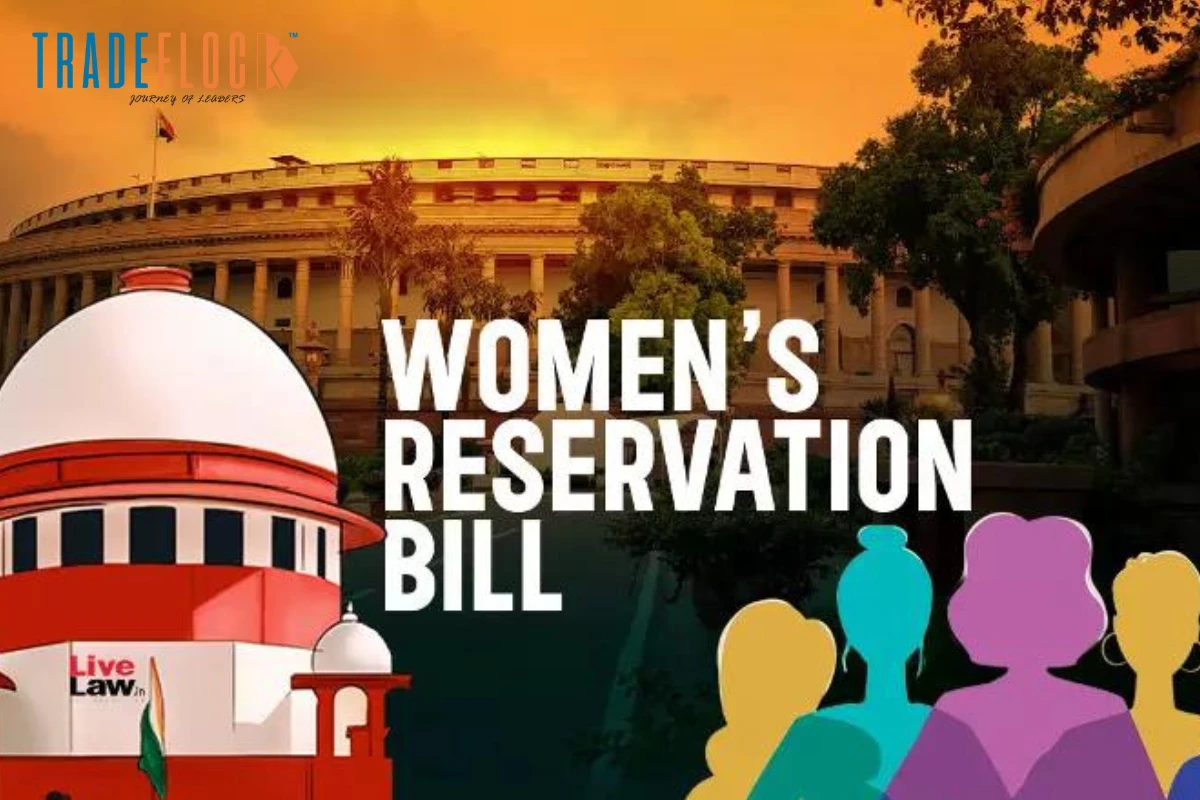The Impact Analysis of the Women’s Reservation Bill
The 128th Amendment Bill, also known as the Women’s Reservation Bill, was approved by both Houses of Parliament on September 19, 2023. This bill, now named the Nari Shakti Vandan Act, aims to allocate 33% of seats for women in the Lok Sabha and all State Legislative Assemblies.
Back in 1993, then prime minister P.V. Narasimha Rao introduced the bill that reserved one-third (33%) of seats and chairperson positions for women in rural and urban local bodies. These bills were successfully passed and enacted into law. The nation has nearly 15 lakh elected female representatives in panchayats and other local bodies. However, the representation of women in our parliament in our parliament is dishearteningly low, standing at just about 15%, even lower than that of Pakistan and Kenya.
Women’s Economic Participation and Opportunity in India
The Global Gender Gap Report for 2023 highlights that India scores poorly at 36.7% in achieving gender equality concerning economic participation and opportunities. However, there’s a parity gap in education enrollment; it doesn’t extend to health and survival metrics.
India stands at 142 out of 146 countries for health and survival indicators and performs inadequately in political empowerment metrics. notably, the passing of a particular bill holds significance, as the representation of women in Parliament has never surpassed 15% throughout India’s 70-year electoral history.
As of January 1, 2023, the United Nations reports that women occupy top leadership roles in 31 nations, and in 34 nations, women are either Head of State or Head of Government.
The 2023 Global Gender Gap Index (GGGI) emphasises a major gender gap in the ‘Political Empowerment’ category, with only 22.1% progress made in closing this gap, showing considerable score disparities among countries.
Rwanda leads among nations using reserved quotas, with women holding 61.3% of its national legislative seats. Cuba and Nicaragua follow closely with 55.7% and 51.7%, respectively. However, India has only reached 25.3% parity in political empowerment, with women comprising just 15.1% of parliamentarians. Though India’s progress is the highest since the first GGGI in 2006, it’s concerning that, at this rate, achieving political empowerment for women in India might take another 162 years.
This context suggests that the mentioned Bill shows promise in advancing gender equality and women’s empowerment. Yet, the Bill faces challenges as it doesn’t guarantee a direct path from reserved quotas to actual political decision-making and empowerment.
This analysis aims to explore the complexities of reserved quotas and the gender-based aspects of ministerial positions. It will also delve into the significant hurdles women encounter in politics, addressing intersectionality and violence issues.
Reserve Quotas’ Concerns
Some advocates for women’s rights argue that implementing gender quotas might impede the political empowerment of women by suggesting that they cannot succeed without special arrangements. There are also concerns that quotas could shift focus away from representing other minority groups, potentially leading these groups to also seek quotas. In India, the Women’s Reservation Bill faces challenges related to both horizontal and vertical reservations.
Horizontal reservation involves setting aside seats in parliament for women, aiming for gender equality and policies mindful of gender issues. Vertical reservation, specifically for Other Backward Classes (OBCs) within the women’s quota, raises concerns about the representation of marginalised communities. This concern was evident in opposition parties’ calls for a separate OBC sub-quota within the reserved quota for women. Their argument is that OBCs make up nearly 40% of the population but, unlike Scheduled Castes (SCs) and Scheduled Tribes (STs), they do not have a distinct reservation in the Lok Sabha and state legislative assemblies.






